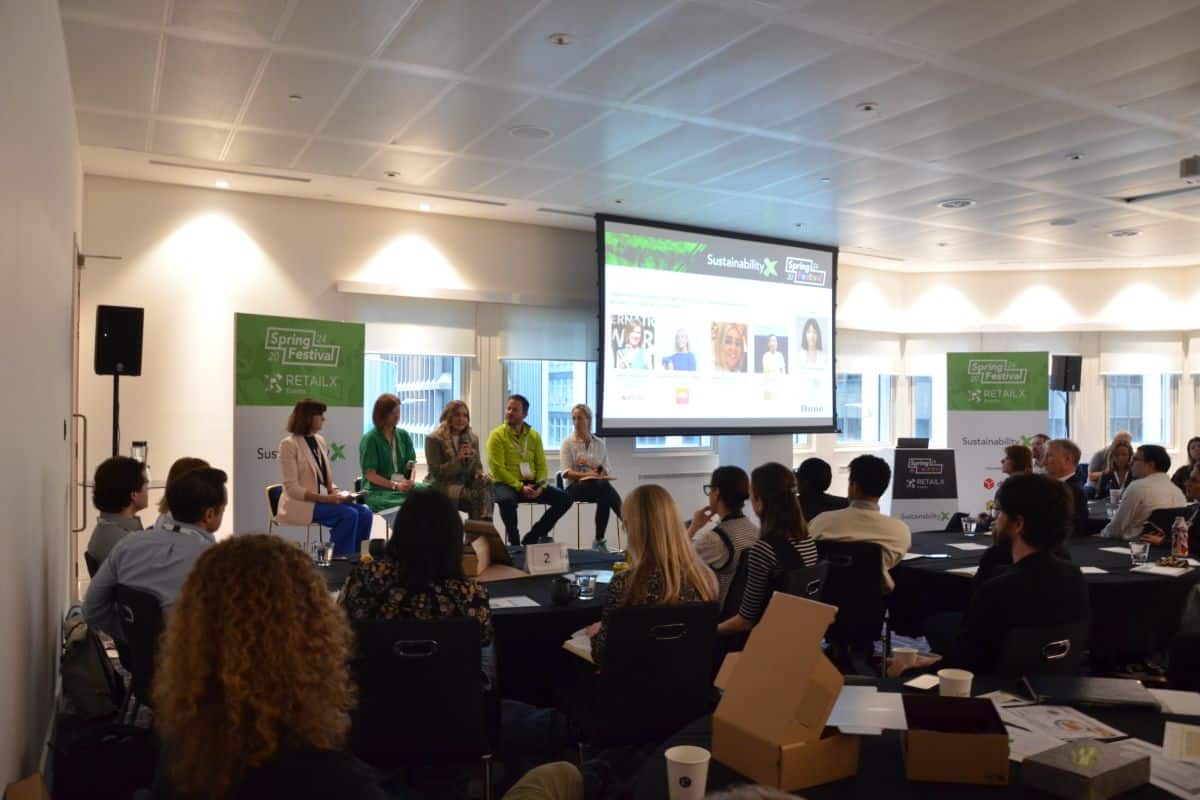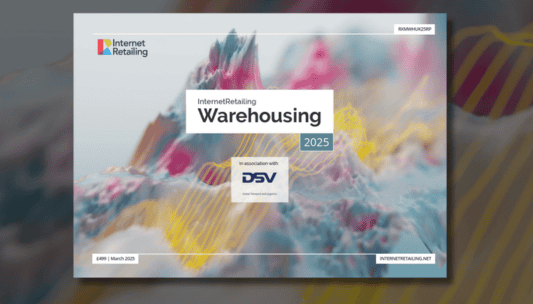The Internet of Things has long been seen to have enormous potential. But as yet, relatively few brands and retailers have got to grips with how the IoT might enhance their multichannel strategies. Chloe Rigby finds out more about the opportunities.
Retailers and brands are now starting to use the Internet of Things (IoT) at scale. They are connecting smart devices and low tech items alike to the internet, enabling them to send messages, broadcast locations and orders that result in increased brand awareness or commerce transactions.
According to Vodafone’s 2017/18 IoT Barometer Report, worldwide adoption of the technology rose among retail businesses to 26% in 2017 from 20% in 2016, while 9% of retailers now have 10,000 or more connected devices. It’s not just the products themselves, either: smart packaging and retail space are also being connected up in a way that presents new opportunities – and challenges – for those that seek to deploy them.
What does this look like in practice? Cameron Worth, founder of UK IoT agency SharpEnd, thinks that the technology enables a new kind of retailing in which the best customer engagement is barely there.
“It’s about being invisible a lot of the time,” says Worth. “We work a lot on invisible service design, where those things that happen around you that you don’t play a part in are the most wonderful things.”
Take the IoT-enabled drinking vessels made from coconuts that SharpEnd designed for the Malibu rum brand. Visitors drinking Malibu registered their details to their specific coconut cup so that it acted as a bar tab. When they wanted to reorder their drink, they twisted the connected base of their vessel. Doing so broadcast the order to the bar, allowing staff to find them by tracking the coconut cup in order to refill their drink. At the end of the night, customer just to settle the bill.
“You can twist the base of a vessel, then all this stuff happens on the back end and the output is you have a pina colada delivered to you without needing to queue,” says Worth. “These are the services that are more interesting right now. It’s when customers leave a space saying everything just worked.” He adds, “That was very much a nod in the right direction of where we think overall service design is going to go in on-trade environments. While definitely not the finished solution, it was certainly a step in the right direction.
“The biggest thing we’ve found, one of my favourite learnings from a pilot ever, was when we were trying to scale it up. Since every coconut is unique, there’s not a one-format shape for a coconut, so when doing injection moulding to protect circuit boards at the base of a vessel, there wasn’t actually any factory solution that you could go into. We really got stumped by nature at that point.”
The IoT at work
Other current examples of the Internet of Things at work include Seattle convenience store Amazon Go, which acts as a connected retail space. Shoppers who have pre-downloaded the Amazon Go app on their smartphone collect their shopping in the usual way but as they add items to an actual basket, they are also added to a virtual basket. When they leave the shop without going through a check-out, their linked credit card is automatically billed.
Amazon customers elsewhere can top up on commonly ordered products using wi-fi connected Amazon Dash buttons, with dozens of brands now using these devices. Amazon has said that UK shoppers tend to use their Dash buttons to buy the super-essentials such as toilet paper, cat food and… coffee.
Between its 2016 launch and June 2017, the five most commonly used buttons were from Andrex, Finish, Ariel, Gillette and Nescafé Dolce Gusto. Connected devices can also order their own refills, using another Amazon innovation, the Amazon Dash Replenishment Service. A growing range of smart products, from printers to washing machines and water filters, are enrolled in this service.
Nike is testing a retail app that personalises the customer shopping experience. When a shopper with a smartphone equipped with the app arrives in the store, it recognises them and shows them relevant products in the app.
It also enables them to check for product availability locally, checkout and pay through the app, or reserve products that are held in lockers so that customers can try on items before they buy. The approach is now being trialled in flagship stores in Los Angeles and Portland, with plans to scale it up.
IoT technology can also be very straightforward. Vodafone, which operates the V by Vodafone IoT network, has enabled consumers to attach their own items, everything from cars to briefcases and even pets, to the Internet of Things through products including connected car dongles as well as activity and location trackers.
The simplicity is key to uptake. Vodafone Group launched this capability late last year, when its chief executive Vittorio Colao said the IoT was already beginning to transform the way that businesses operate. “Over the next decade, the expansion of IoT into consumer markets will bring about an equally dramatic shift in how people manage their daily lives,” he said. “V by Vodafone makes it simple to connect
a wide range of IoT-enabled devices.”
First steps to an IoT strategy
Smart packaging, space activation and connected products are the three key areas, says SharpEnd’s Worth, in which brands and retailers are starting to think about developing their IoT strategies.
Smart packaging can carry NFC chips or, still more simply, printed QR codes, allowing the customer to interact with the box via their smartphone.“One of the most obvious opportunities right now is looking at the products people buy and thinking how to connect to consumers through those,” says Worth. He also sees opportunities in using existing retail space to connect with customers, turning it into a platform that underpins new types of services and customer experiences.
Currently, he says, SharpEnd tends to approach retailers on behalf of the brands that they stock, finding the opportunities where brands can use the space where they are stocked to interact with customers. “We’re working brand-first, taking innovations to retailers and saying, ‘Can we pilot this in your stores?’ I think there needs to be a lot more work done with the retailers themselves to find out how to create the capabilities to be able to take this to brands in order to create all kinds of new revenue opportunities.”
But in all these areas, he notes, the most important thing is to start with the retailer or brand’s pain points in order to develop solutions that work. The Malibu trial, for example, overcame the pain of queueing for a drink, while Amazon Go also aims to remove the pain of queueing – this time in a supermarket. Amazon Dash Replenishment removes the pain of running out of items such as laundry liquid, water filters or printer ink.
It’s important, thinks Worth, that solutions are trialled at a small scale with low-cost versions of the technology to show how this might work at scale. That enables brands and retailers to get boardroom buy in before investing in larger scale and more expensive rollouts.
Think about toilet paper
Oddly enough, it might help to think about toilet roll when considering how an IoT concept might work. “We think about toilet paper a lot at SharpEnd because if you can make it work for toilet paper, you can make it work for anyone,” says Worth. Andrex, he says, uses pictures of puppies on its packaging because they’re cute – and also because no-one wants to talk about toilet paper, or to give the buying of it much thought.
“There’s an opportunity for a new type of product or service,” says Worth. “What about putting a sensor on the toilet roll holder so it monitors and knows when you’ve just run out of your 11th roll and you have one toilet roll left? Then it adds that to your basket and promises not to advertise to you as the result of a subscription service, but passes savings to you because it doesn’t need to message you, advertise you, track your data or spend on data and analytics.
Then the question is, do you prefer Andrex or this other brand that gives decent toilet paper and service? I think people would be more likely to say they prefer the brand that gives decent toilet paper and leaves us alone. These will be the brands that will work in the future.”
Indeed, Worth foresees the Internet of Things enabling a future of retail in which brands don’t need to advertise at all in the way they do now. “I think people are sick of being beamed adverts across different screens, emails following them everywhere, having a conversation in the real world and then an ad popping up on Instagram. I think that’s an old world thing of getting your logo in front of as many people as possible. I think what’s going to drive brands in the future is being more contextual about how you deliver services.
So, understanding the retail space you’re in, understanding what you might need, being able to get you that service and then being able to leave you alone straight afterwards, without having to take part in an email sign up.” The role of retailers in that, he says, is to build the capabilities that enable brands to use the retail space to deliver services that work both for individual consumers and for businesses.
IoT benefits – and challenges
Better collection of data and cutting costs are emerging as the chief business opportunities of IoT technology: each was named as a benefit by 47% respondents to Vodafone’s 2017/18 IoT Barometer. Increased revenue and an improved customer experience were both cited by 41% of respondents. Where organisations saw a reduction in costs, it came in at 16% on average, and where they saw a boost in revenue, that revenue increased by an average of 19%.
But with these benefits come challenges. Security tops the list of concerns among respondents to the Vodafone study: 18% named this as the leading barrier to their organisation using the IoT. In a recent InternetRetailing webinar, Maintaining availability while under attack, Jay Coley, senior director, security, planning and strategy at Akamai Technologies, illustrated the risks associated with IoT devices through references to the Mirai botnet, which first emerged in 2016.
“Mirai is a botnet based on IoT devices, which can be shipped with little or no security features built into them and, once they’re plugged into the internet, can be taken over by malicious users malicious actors and used at will,” said Coley. “With the explosion of these devices, we’ve seen the number of unique IP count and the size of these botnets grow dramatically.” He noted the botnet could carry out multiple functions at once, running a DDoS while operating credential abuse, for example. He added: “We should expect to see more of these as more IoT devices come onto the market.”
Clearly security must be a priority in any IoT strategy and more adopters of IoT technology are now investing in it. According to Vodafone’s IoT Barometer, 46% of IoT adopters were recruiting specialists in this area in 2017, up from 41% in 2016, while 47% were working with a specialist security provider and 48% were training existing staff.
It’s probably a given that it will be important to invest in security around the IoT. For many, it seems, the opportunities will outweigh the costs. For IRUK Top500 retailers, this is likely to prove an important channel in years to come.







